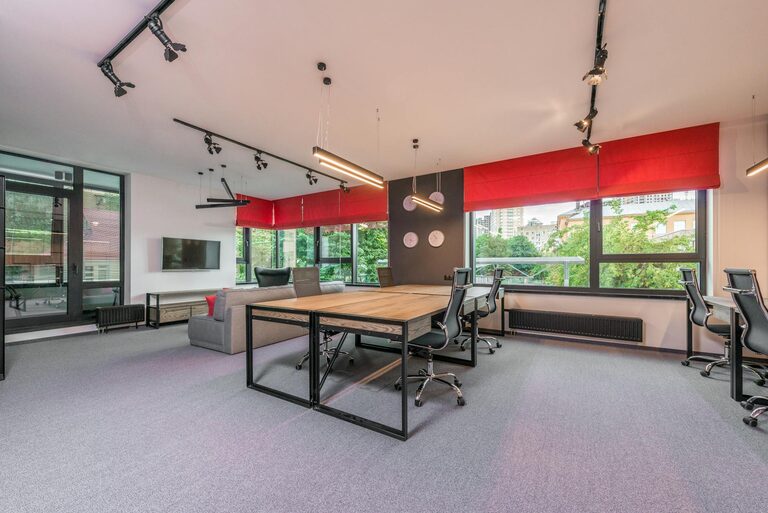When it comes to creating an efficient and pleasant workspace, selecting the right desk chair is crucial. A comfortable chair not only helps maintain good posture but also reduces the risk of back and neck pain, helping you stay focused and productive throughout the day. With so many options available, finding the perfect chair might feel overwhelming. This guide offers practical tips to help you choose a desk chair that suits your needs and keeps you comfortable for hours on end.
Why Comfort Matters in a Desk Chair
Spending long hours sitting without proper support can lead to discomfort, fatigue, and even chronic pain. A well-designed chair supports your lumbar spine, aligns your body correctly, and allows you to adjust your sitting position as needed. Choosing a chair that fits your body and work habits boosts concentration and prevents health issues related to poor posture.
Key Features to Look for in a Comfortable Desk Chair
1. Adjustable Height and Seat Depth
A comfortable chair should allow you to adjust its height easily. Your feet should rest flat on the floor, and your knees should be at a 90-degree angle or slightly lower than your hips. Adjustable seat depth ensures that you don’t feel pressure behind your knees, which can restrict circulation. When tested, there should be a gap of about 2 to 4 inches between the edge of the seat and the back of your knees.
2. Good Lumbar Support
Lumbar support is essential for maintaining the natural curve of your lower spine. An effective lumbar support feature can be either built-in or adjustable. Look for chairs with padded lower back rests or adjustable lumbar support mechanisms, so you can customize the fit based on your body shape.
3. Comfortable Padding and Breathable Material
The padding should provide enough cushioning without being too soft, which might reduce support. Memory foam or high-density foam padding often offers a good balance of comfort and durability. Additionally, breathable materials such as mesh allow better airflow, reducing sweat and discomfort during long sitting sessions.
4. Adjustable Armrests
Armrests help reduce tension in your shoulders and neck by supporting your arms. Adjustable armrests that move up, down, in, and out let you find the most comfortable position. When resting your arms on them, your elbows should be at a roughly 90-degree angle.
5. Swivel and Mobility
A chair that swivels 360 degrees and has smooth-rolling casters promotes ease of movement, especially if your work involves multitasking at your desk. This feature reduces strain caused by twisting or reaching awkwardly.
Additional Considerations
Seat Width and Backrest Height
Select a seat width that feels comfortable and lets you move without feeling confined. The backrest height should support your entire back, including your upper back and shoulders if possible.
Tilt and Recline Functions
Chairs with tilt and recline options can help you shift positions throughout the day, reducing stationary time and pressure on your spine. Look for a chair that locks in multiple recline positions and provides tension control.
Weight Capacity and Durability
Make sure the chair supports your weight comfortably. Higher weight capacities often mean a more sturdy build, which usually results in greater durability over time.
How to Test a Desk Chair Before Buying
Whenever possible, try the chair in person. Spend at least 10 to 15 minutes sitting naturally as you would while working. Check if you can adjust all features effortlessly and feel supported. Pay attention to how your back and legs feel during the test.
If purchasing online, read customer reviews carefully and study detailed product specifications. Look for brands that offer return policies or trial periods so you can test the chair in your own workspace.
Setting Up Your Desk Chair for Optimal Comfort
Once you have your chair, proper setup is equally important:
– Adjust the height so your feet are flat on the floor.
– Position the lumbar support to fit the inward curve of your lower back.
– Set armrests to a height where your shoulders stay relaxed.
– Sit fully back in the chair to enjoy full backrest support.
– Ensure your desk and monitor are positioned so you can sit upright without slouching.
Maintaining Your Desk Chair
To keep your chair comfortable for years:
– Regularly clean the upholstery according to manufacturer instructions.
– Tighten screws and bolts periodically to avoid wobbling.
– Lubricate casters and moving parts if they start to squeak.
– Replace worn-out cushions or components when needed.
Final Thoughts
Choosing a comfortable desk chair is an investment in your health and work quality. Prioritize ergonomic features, adjustability, and quality when shopping. Remember that what works best can vary by individual, so listen to your body and take time to find a chair that truly fits your needs. With the right chair, your workspace can become a place where you feel supported and ready to tackle your tasks.
—
By following these tips, you’ll be well on your way to picking a desk chair that combines comfort, support, and functionality — making your workdays healthier and more enjoyable.

